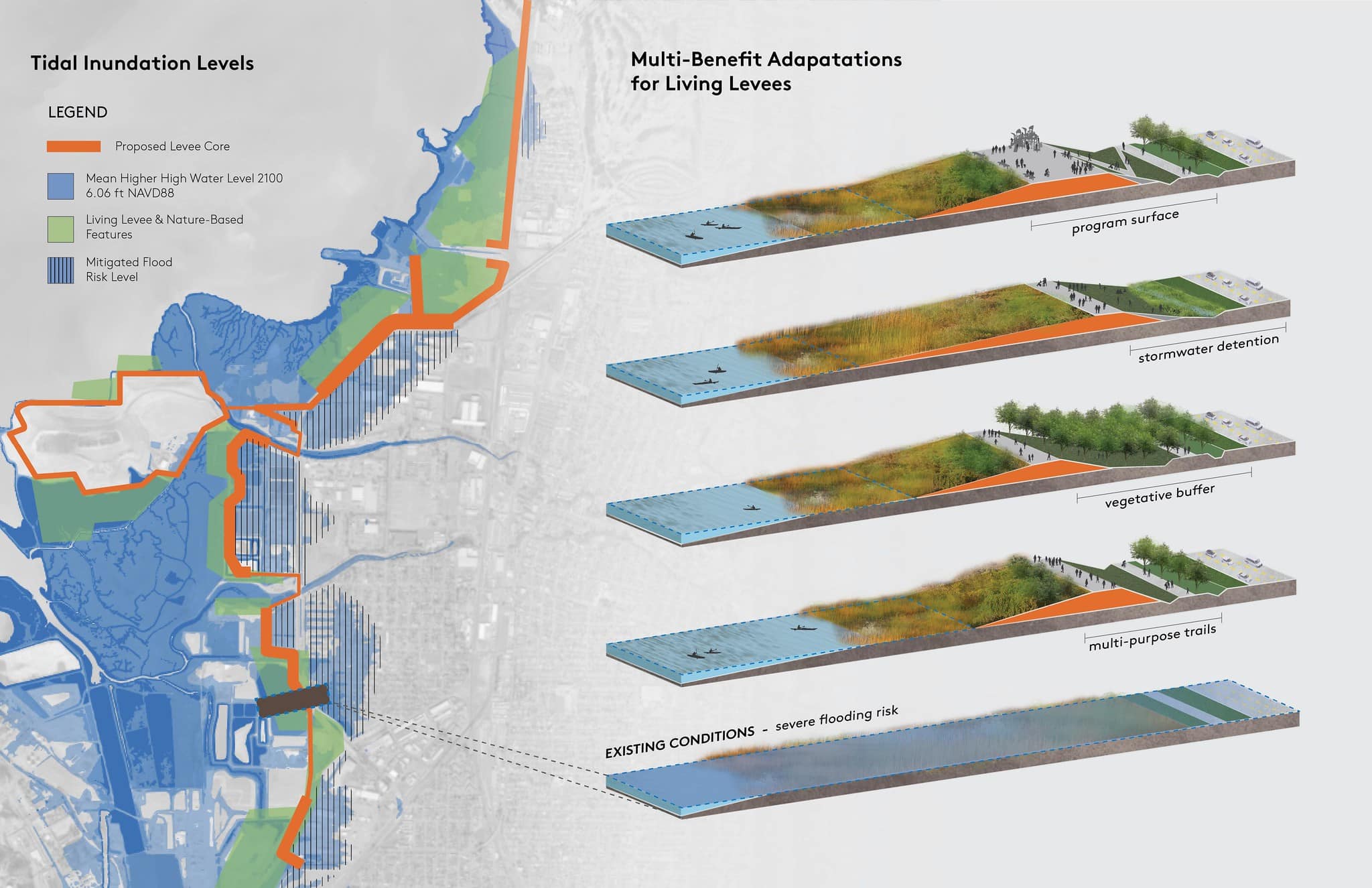The North Richmond Shoreline is a high priority for conservation and climate adaptation due to its wetlands being near the shoreline where the Wildcat and San Pablo Creeks flow out.
A new policy tool, “Climate Resilience Districts,” is being introduced to support local investment, hiring, and project development of a living levee. Resilience Districts can be created for the purposes of raising and allocating funding for eligible projects and their operating expenses. Such projects would address sea level rise, extreme heat, extreme cold, and the risk of wildfire, drought, and flooding.
The primary goal of this district is to move from a traditional “return to capital” model to a community wealth-building “return to community” model that captures the benefits of re-localizing labor, capital, and resources. The benefit of such an agency is that it can specialize in this work and implement similar governance models in additional Contra Costa locations. It can also inspire community-based climate adaptation projects in other regions that are facing sea level rise and flooding risks.
What is a living levee?
A living levee is an integrated approach to flood control. It creates a hybrid ecological system that incorporates tidal and subtidal vegetation as part of the water treatment process. Creeks and riparian habitats support sediment flow, leading to the development of a healthy marsh plain. Water from pumping systems would be used to irrigate the adjacent urban forest, agriculture, and nurseries, while also preventing low-lying areas from flooding.
A living levee in North Richmond would:
- Help to protect soil from being contaminated as a result of sea level rise, protecting community health.
- Minimize flooding in North Richmond and replenish marshlands while supporting the growth of new marsh.
- Safeguard infrastructure from sea level rise and flooding, including neighborhood housing, the Richmond Parkway, the wastewater facility, and the industrial and farming lands that support job creation and provide valuable marsh habitat.
- Create an environment for wildlife and recreational opportunities for surrounding communities to have access to the shoreline. Levee trails will provide multiple walking experiences and trail connections in case of high tides while offering panoramic views for visitors and community members.
- Serve as a community placemaking initiative that brings people together to protect the future of their city and its natural lands.
- Create additional reclaimed water for local uses such as the Urban Tilth farm and greenbelt plantings.
- Ensure that a subdued marsh coexists alongside warehouses that offer employment opportunities to locals.

